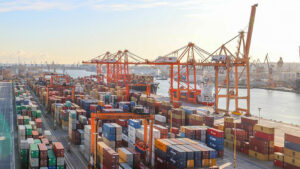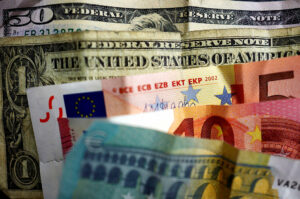A REBOUND in domestic consumption could widen the Philippines’ trade and current account deficits this year amid a surge in imports, Bank of America (BofA) Global Research said, which could increase foreign debt and weaken the peso if they run for far too long.
“We see consumer confidence and consumption recovering further as inflation remains subdued and monetary authorities cut policy rates further,” it said in a report. “We see one risk to the resurgent consumer — a rebound in imports of consumer goods that may widen the trade and current account deficit in 2025.”
BofA expects the current account deficit to settle at 4% of economic output this year.
The current account deficit, which covers transactions involving goods, services and income, rose 41.4% to $17.5 billion last year from a year earlier, according to Philippine central bank data. This brought the current account to 3.8% of economic output from 2.8%.
A country that sends more money outside its borders to pay for imports than it brings in from exports risks running a current account deficit, forcing it to borrow, usually from overseas. Running a deficit for too long can make it vulnerable to sudden changes in global money movements.
The central bank expects the current account deficit to hit $19.8 billion this year, equivalent to 3.9% of economic output.
“The nascent consumer recovery witnessed through the first quarter came with one less favorable by-product — increased imports,” BofA said.
In the first four months, Philippine exports rose 9.5% to $26.87 billion, while imports went up 5.6% to $42.78 billion. This was well above the government’s 6% and 5% growth targets this year for exports and imports, respectively.
BofA said it expects consumer confidence and consumption, which accounts for about three-quarters of the economy, to recover further amid subdued inflation and expectations of further interest rate cuts.
“Consumer confidence inversely tracks inflation and this decline in inflation in 2025 should see consumer confidence finally return to pre-pandemic levels,” BofA said.
In the central bank’s latest consumer expectations survey, consumer confidence improved for the first quarter and the next 12 months amid a more upbeat outlook on income and jobs.
Resilient consumer credit will also support the consumer rebound, BofA said.
“Consumer credit has been growing faster than corporate and overall credit growth — especially loans for cars, credit cards and personal loans,” it added.
Outstanding loans of universal and commercial banks grew 11.12% year on year to P13.25 trillion in April. Consumer loans jumped 24% to P1.67 trillion, driven by the increase in credit card loans, which rose 29.3%.
“Mortgage lending has lagged but may improve as policy rates ease further and longer-term credit costs subside,” BofA said. “The growth in consumer credit is another factor that supports a consumer recovery, in our view.” — L.M.J.C. Jocson






